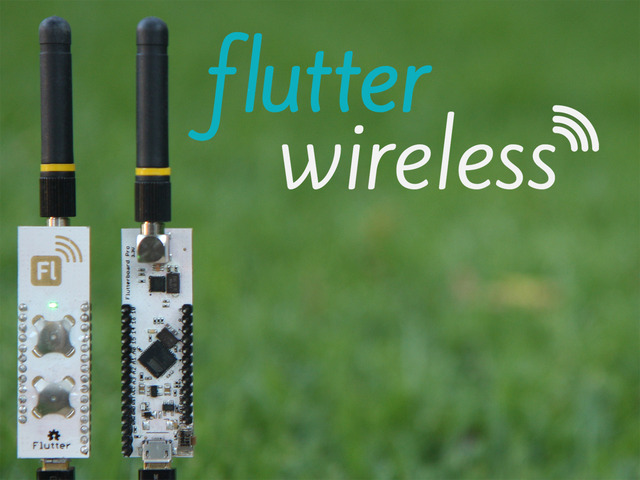
Crowdfunding through platforms like Kickstarter is an easy way to bring great ideas to life. But regardless of whether the underlying ideas are simple, revolutionary, or impossibly optimistic, the campaign’s outcome is often unpredictable. One such project—Flutter , an Arduino-based microcontroller board—successfully reached its funding campaign goal but the project kick-ended when a simple manufacturing mistake cost the company their launch date and hundreds of supporters.
Kickstarter: a way to kick start projects
Kickstarter is a global virtual community of over 10 million vibrant backers who pledge money and support to the innovative endeavors of strangers. Since launching in April of 2009, the crowdfunding platform has facilitated the transfer of $2.5 billion in pledges to successfully fund 108,898 projects. Among the most successful and well-funded Kickstarter campaigns of 2015 was the Pebble Time Smartwatch, which raised more than $20 million with nearly 80,000 backers.
While procuring millions of dollars in funding is no easy feat, most projects, and companies campaign for a more modest backing within the $10,000 range. Flutter Wireless, for example, crusaded for $80,000 to fund their project but raised an unexpected and astonishing $149,906 pledged from 1,598 backers.
What is Flutter Wireless?
The Flutter board is an Arduino-based high- performance microcontroller board that was designed to make wireless communication easier and less-expensive. Founded in March of 2013, Flutter refined its development platform based on a project built during a Y-Combinator hackathon competition that same year. Flutter features a fast Cortex-M3 processor, hardware cryptography, battery charging, and powerful long-range wireless communication with over 1-kilometer range.
Designed as an ideal choice for robotics, wireless sensor networks, consumer electronic, and educational platforms, Flutter gained sufficient backing on Kickstarter, which, according to a study conducted by CNN , isn’t always enough for success.
A failure of solo entrepreneurship
“Failure of solo entrepreneurship, miscalculated loan, frequency offset issues, the manufacturer used counterfeit substitutes ”were just some of the problems that Flutter founder Taylor Alexander confessed in his 41 updates on the Kickstarter page since the campaign ended in September 2013. For a project that raised 187x its projected funds, Flutter faltered when manufacturing issues pushed its delivery date back three years.
In an April 2015 post entitled Shipping update, Alexander boasted to backers that “about 25% of [Kickstarter] rewards will ship this month-send the info to Seeed studio for drop shipping.” After a hiatus due to personal issues (with infrequent posts in between), Alexander posted in March of 2016 to Kickstarter that the Chinese manufacturer Seeed no longer offered shipping services, meaning he would have to ship all products out himself. With shipping from the US more expensive than shipping from China, Alexander was forced to secure a second loan to gain enough funds for delivery, over a year after the anticipated shipping date.
One year after his initial shipping update in April 2016, Alexander discovered an issue with the radio frequency of some of the boards after receiving a shipment from the Seeed. The frequency of some of the boards was off by +/- 50KHz or so, resulting in inconsistent and missed radio transmission between boards. While the boards CC12000 radio chip could compensate for some errors (as it can align itself for any signal it detects), Alexander assured backers the problem would be fixed. He forebodingly wrote in his May 2016 update: “If I don't run into any hiccups, I will be shipping the first batch of boxes on the weekend of June 14th, and will post a quick update when that happens.”
The June/July 2016 update was simply titled “I made a mistake.” In the post, Alexander reveals that the manufacturer surreptitiously used several substitutes for the 40MHz Epson crystals that the radio uses as a frequency reference. Some of the substitutes were a similar part from another manufacturer while others were counterfeit crystals. Alexander said the company was remedying the situation, but that shipping would be further delayed another month. The last July 3rd update said Flutter was working with Seeed’s local office to analyze the boards, replace some of the crystals, and determine a course of action which includes shipping to top backers soon.
Why most popular Kickstarter projects fail:
A study conducted in 2012 by CNN analysis reviewed the 50 top funded Kickstarter projects with estimated delivery dates if November 2012 or earlier to see which products shipped on time and why the stragglers were late. According to the data, 84% of the Kickstarter projects missed their target delivery dates.
The most successful crowd funders convince thousands of enthusiasts to financially support their vision. If it fails to become a reality—at least within the promised timeframe—the project can be a failure to deliver. In the investigation, a pattern emerged to show that success paired with inexperience was the ultimate downfall. When an inexperienced team anticipates a few hundred backers but winds up earning exceptionally greater numbers, it often lacks to expertise to properly scale its original production plan and timeline, resulting in delay. What’s more, any hiccup in production or manufacturing can further push the time table back weeks, months, or, in the case of Flutter, even years.
The Flutter Kickstarter page is frequently updates with micro changes in progress on the project, but no definitive shipping date as of yet.
Sources: Flutter , Bloomberg , Kickstarter , CNN
Advertisement
Learn more about Electronic Products Digital





